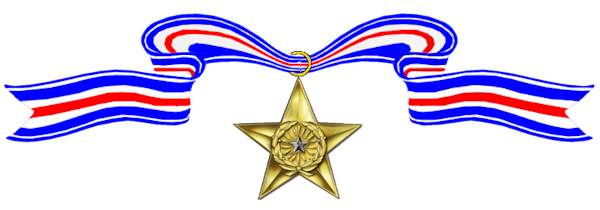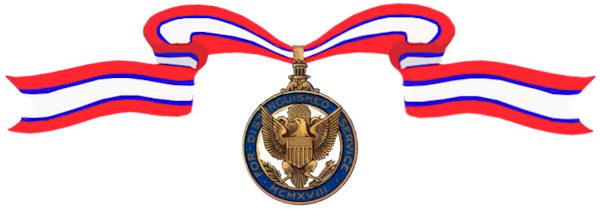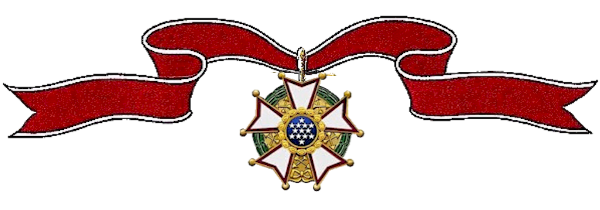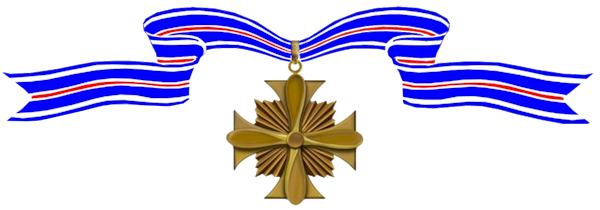(Citation Needed) – SYNOPSIS: The President of the United States of America, authorized by Act of Congress July 9, 1918, takes pleasure in presenting the Silver Star to Captain (Infantry) George William Casey (ASN: 0-27609), United States Army, for gallantry in action while serving with the 31st Infantry Regiment, 7th Infantry Division, in action against the enemy in Korea, in 1952. The gallant actions and dedicated devotion to duty demonstrated by Captain Casey, without regard for his own life, were in keeping with the highest traditions of military service and reflect great credit upon himself and the United States Army.

Awards Received
-

Army Distinguished Service Medal
-

Legion of Merit
-

Silver Star
-

Silver Star
-

Legion of Merit
-

Legion of Merit
-
Army Distinguished Service Medal
Service:
United States ArmyRank:
Major GeneralDivision:
1st Cavalry DivisionAction Date:
1969 – 1970
(Citation Needed) – SYNOPSIS: Major General George William Casey, United States Army, was awarded the Army Distinguished Service Medal (Posthumously) for exceptionally meritorious and distinguished service in a position of great responsibility to the Government of the United States as Commanding General, 1st Cavalry Division, from 1969 to 1970. The singularly distinctive accomplishments of General Casey and his dedicated contributions in the service of his country reflect the highest credit upon himself and were in keeping with the highest traditions of the United States Army.
-
Legion of Merit
Service:
United States ArmyRank:
ColonelDivision:
1st Cavalry DivisionAction Date:
November 1967 – September 1968
The President of the United States of America, authorized by Act of Congress, 20 July 1942, takes pleasure in presenting a Bronze Oak Leaf Cluster in lieu of a Second Award of the Legion of Merit to Colonel George William Casey (ASN: 0-27609), United States Army, for exceptionally meritorious conduct in the performance of outstanding services to the Government of the United States during the period November 1967 to September 1968, while serving as Assistant Director, Doctrine Directorate; Military Advisor for Analytical Studies, Study and Analysis Office; and as Deputy Director and at various times as Acting Director of the Doctrine Directorate, Headquarters, United States Army Combat Developments Command, Fort Belvoir, Virginia. As Assistant Director of Doctrine Colonel Casey served as Vice Chairman and Member of the Tank/Antitank/Assault Weapons Requirements Study Advisory Group/Review Board, in which capacity he made marked contributions to the development, refinement, and orderly execution of this complex study. In addition, as a member of the Utility Tactical Transport Aircraft Study Group (UTTAS) Review Board composed of members from the Department of Defense, Department of the Army, United States Army Materiel Command and the United States Army Combat Developments Command, he was instrumental in providing the guidance which led to the successful and timely completion of the initial phase of that highly important study. Colonel Casey was assigned to the Study and Analysis Office with specific duties as Military Advisor for Analytical Studies. In this capacity he monitored selected studies, analyses, and projects with a view toward providing advice and assistance regarding methodology, content, and quality of work. In addition to these significant accomplishments, Colonel Casey was specially selected by Department of the Army to Chairman Ad Hoc Committee convened at the direction of the Vice Chief of Staff of the Army for the purpose of rewriting the Proposed Qualitative Material Requirements (PQMR) for the Mechanized Infantry Combat Vehicle (MICV). The end result of this new PWMR was to recommend to Department of the Army the most feasible basic design characteristics of the MICV for employment in mid-high intensity conflict based on postulated threat during the 1970-80 time period. His outstanding meritorious service reflects great credit upon himself, the United States Army Combat Developments Command, and the military service.
-
Silver Star
Service:
United States ArmyRank:
Colonel (Infantry)Division:
1st Cavalry Division (Airmobile)Action Date:
1966 – 1968
United States Military Academy Register of Graduates(Citation Needed) – SYNOPSIS: The President of the United States of America, authorized by Act of Congress July 9, 1918 (amended by an act of July 25, 1963), takes pleasure in presenting a Second Bronze Oak Leaf Cluster in lieu of a Third Award of the Silver Star to Colonel (Infantry) George William Casey (ASN: 0-27609), United States Army, for gallantry in action while engaged in military operations involving conflict with an armed hostile force in the Republic of Vietnam. Colonel Casey distinguished himself by exceptionally valorous actions while serving as Commanding Officer and later Chief of Staff of the 2d Brigade, 1st Cavalry Division (Airmobile), in action against the enemy from 1966 to 1968. The gallant actions and dedicated devotion to duty demonstrated by Colonel Casey, without regard for his own life, were in keeping with the highest traditions of military service and reflect great credit upon himself and the United States Army.
-
Silver Star
Service:
United States ArmyRank:
Colonel (Infantry)Division:
1st Cavalry Division (Airmobile)Action Date:
1966 – 1968
United States Military Academy Register of Graduates(Citation Needed) – SYNOPSIS: The President of the United States of America, authorized by Act of Congress July 9, 1918 (amended by an act of July 25, 1963), takes pleasure in presenting a Bronze Oak Leaf Cluster in lieu of a Second Award of the Silver Star to Colonel (Infantry) George William Casey (ASN: 0-27609), United States Army, for gallantry in action while engaged in military operations involving conflict with an armed hostile force in the Republic of Vietnam. Colonel Casey distinguished himself by exceptionally valorous actions while serving as Commanding Officer and later Chief of Staff of the 2d Brigade, 1st Cavalry Division (Airmobile), in action against the enemy from 1966 to 1968. The gallant actions and dedicated devotion to duty demonstrated by Colonel Casey, without regard for his own life, were in keeping with the highest traditions of military service and reflect great credit upon himself and the United States Army.
-
Legion of Merit
Service:
United States ArmyRank:
Brigadier GeneralAction Date:
September 1968 – July 1969
The President of the United States of America, authorized by Act of Congress, 20 July 1942, takes pleasure in presenting a Second Bronze Oak Leaf Cluster in lieu of a Third Award of the Legion of Merit to Brigadier General George William Casey (ASN: 0-27609), United States Army, for exceptionally meritorious conduct in the performance of outstanding services to the Government of the United States during the period September 1968 to July 1969, while serving as Commanding General, United States Army Combat Developments Command Combat Arms Group, Fort Leavenworth, Kansas. Throughout his assignment Brigadier General Casey fulfilled all of his complex responsibilities in a remarkable manner, demonstrating exceptional competence, initiative, judgment, dedication and outstanding leadership. Brigadier General Casey made important and substantial contributions in the combat developments area through his personal guidance and supervision of such important studies as the Family of Army Aircraft Study – 1970 – 1985 (FAAS-85), Utility Tactical Transport Aircraft Systems Study (UTTAS), Cheyenne Project, Tank Anti-tank Assault Weapons Study (TATAWS), Infantry Rifle Unit Study (IRUS), and the Support of Airmobile Operations through Destruction of Enemy Air Defense Systems Study (SAMODEADS). Brigadier General Casey displayed outstanding managerial skill and expertise in the allocation of ever dwindling resources to satisfy constantly increasing requirements. By his application of broad knowledge, innate intelligence, sound judgment, and original thinking, coupled with professional skill and outstanding leadership, Brigadier General Casey has made a major contribution to the accomplishment of the Combat Developments Command mission. This exceptionally meritorious record of service is in keeping with the highest traditions of the military service and reflects great credit upon himself, the United States Army Combat Developments Command, and the military service.
-
Legion of Merit
Service:
United States ArmyRank:
ColonelBatallion:
`Division:
1st Cavalry DivisionAction Date:
1966 – 1969
United States Military Academy Register of Graduates(Citation Needed) – SYNOPSIS: Colonel George William Casey, United States Army, was awarded the Legion of Merit for exceptionally meritorious conduct in the performance of outstanding services to the Government of the United States. The singularly distinctive accomplishments of Colonel Casey and his dedicated contributions in the service of his country reflect the highest credit upon himself and were in keeping with the highest traditions of the United States Army.


